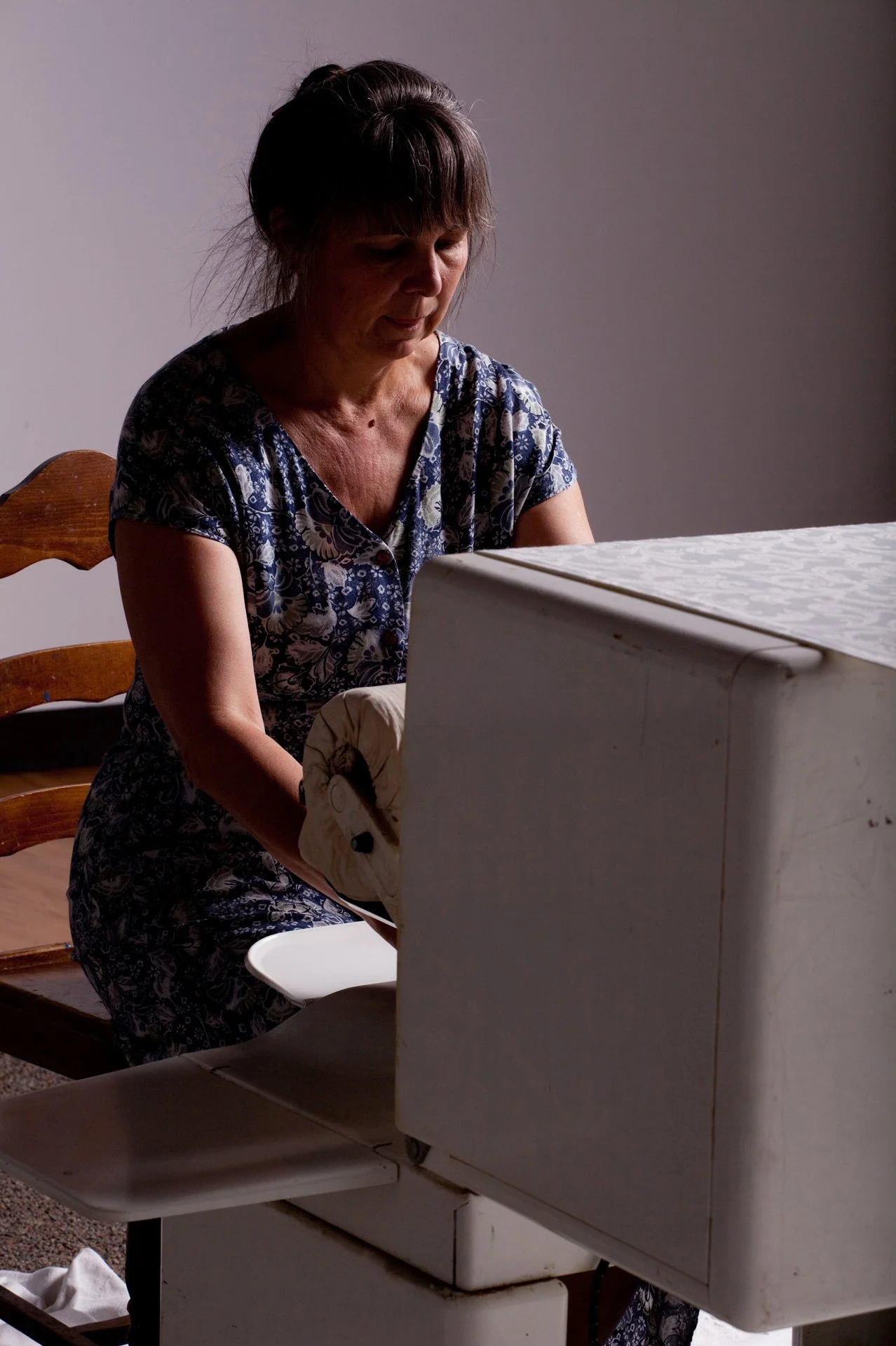
Books in Installation
Devotion
Installation Concept, Design and Construction by Heather Doyle-Maier
2011, 2012
Photos by the late Efrain Cruz.
Edition
Unique Installation (edition of 1)
Measurements
Dimensions Vary
In the collection of
Installation process materials in the collection of Special Collections, University of Denver Penrose Library
Residual installation components in the collection of the artist.
About the Ideas Behind the Installation:
Devotion is both an installation and a performance setting that reflects on the nature of mothers and on the necessity of mothering in maintaining human relational structures. “Mothers” can be considered to be those females who have given birth to and/or raise children, although recent paradigm shifts have allowed us to see that regardless of gender or bearing a child, anyone in an ongoing caretaker role does a degree of “mothering.” “Mother” as an idea bears some weighty baggage, and the installation gives nod to both the idealized and the pragmatic work of mothering.
Philosopher Jacques Derrida offered the structural analysis that “mother will always have a place, so long as she is content to remain on the bottom.” This mother could be recognized as the root of it all, the basis for life - that which must remain of the bottom because it is the ground from which everything grows. This mother makes everything possible. Yet the relentless, unromantic tasks that support the lives of others are also the job of “mother.” This mother cleans up after whatever no one else is willing to attend to. Everything falls to this mother, in her place on the bottom.
I prepared and mounted this installation when my daughter was eleven. Although she was able to care for herself in many fundamental ways, I still shopped and cooked for her, cleaned the spaces she lived in, washed and mended her clothes, drove her to school and activities and just about everywhere she needed to go, read to her, kept an eye on her homework, listened to her triumphs and her struggles, coached her through middle school moments, involved her in church activities, planned outings, and ensured she rested, among other tasks now forgotten to time. This is neither an unusual story nor a heroic one; those days, it’s just what moms did and continue to do now, too. In the personal “structural analysis” that I undertook (as I cooked and laundered as well as prepared this piece), I agreed with Derrida and decided that yes, as a mother, I did indeed have an inarguable place – and that it was as fundamental to me as well as to my daughter.
Devotion was originally designed for installation at the O’Sullivan Art Gallery at Regis University in Denver Colorado; a version of it also appeared at Redline Contemporary Art Center in their 2012 Resident Artist show.
About the Performance in the Installation Space:
In preparation for Devotion, members of the Regis community participated by using designated rags to “mother” someone or something, returning them with their soil and stains. Dozens and dozens of rags were thus “marked.” Each day in the installation, women performing as “mothers” ritually processed individual rags through a mangle (a vintage home ironing machine), pressing the fabric and also heat-setting the stains. After pressing, the performer then placed the rag on the layer of laundry detergent covering the floor and knelt in devotion. The ritual concluded with the mother-performer washing her own hands, before returning to the mangle to repeat the whole process with the next marked rag. Several hundred rags were moved through the installation in this manner
About the Materials and Components:
An Iron-Rite mangle is placed at one end of the Devotion installation. In the original setting, the floor is covered with an inch or so of Tide Free powdered laundry detergent, over sections of which is suspended a large, tightly-stretched, hemmed crinoline sheet a few inches above the ground, with grommets at the corners and bolts fastened to t-nuts that are embedded in undersheets of OSB board. Stretching from the back of the mangle across a long table is a wide runner of ivory damask fabric; this runner reaches and drapes over a small table with a porcelain pitcher and bowl atop. Several “stations” are positioned along the perimeter of the laundry soap, established by rags placed in the laundry soap. In subsequent settings, a long piece of red crepe fabric extends from the back of the mangle and up to the high ceiling, with a single egg resting on the floor under its canopy.
Used rags from installation for sale in groups; please inquire.












